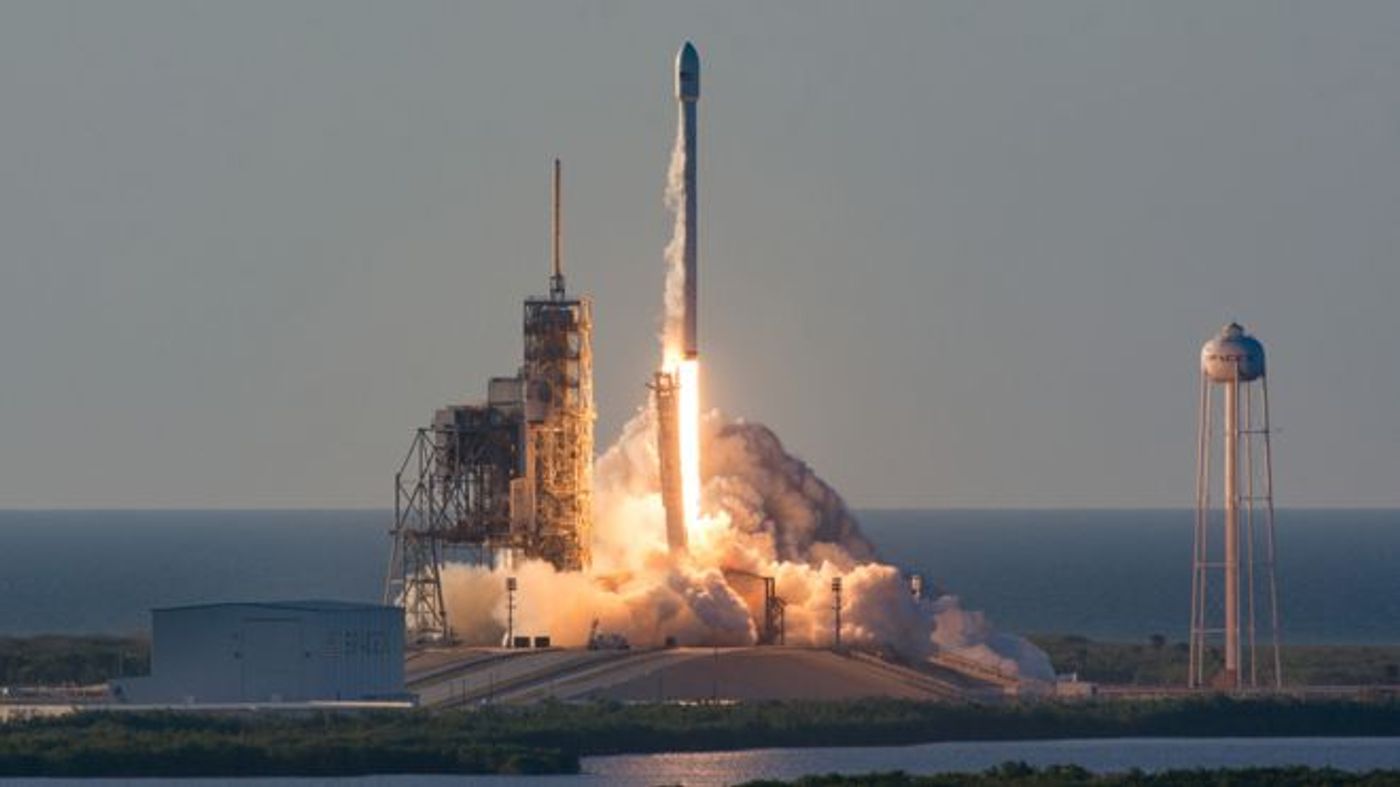SpaceX Launches U.K.-based Inmarsat Satellite Into Orbit
SpaceX was busy this week, once again launching another Falcon 9 rocket into space from Florida’s Kennedy Space Center while carrying a satellite payload, continuing their plan for regular Falcon 9 rocket launches.
While SpaceX has sent numerous satellites into space for commercial companies around the world before, this is the first time that U.K.-based Inmarsat has ever worked with the American commercial space company to send one of its own satellites into orbit.
Image Credit: SpaceX
The purpose of the satellite is to join several others that exist in space today for providing a stream of internet data to airplanes and ships around the world. The location over the planet where the satellite is expected to function is still unknown, as is the answer to the question of who it will serve.
The satellite from Inmarsat weighed in at a hefty 13,000 pounds; so heavy that the Falcon 9 rocket used far too much fuel during the launch and orbit insertion to attempt a signature landing afterwards. Instead, the rocket made a free-fall into the Atlantic Ocean immediately following the launch, similarly to another launch that took place in March.
The launch was live-streamed on YouTube, and so if you missed it, you can watch the launch right now:
Inmarsat is reportedly skeptical about putting one of its satellites on a used Falcon 9 rocket like some companies have done in the past to save money. Although it wouldn’t mind utilizing a used rocket at some point after SpaceX establishes a track record for success, Inmarsat feels more comfortable using new rockets at this point in time.
Once SpaceX gains a bit more of a reputation for reusable rocket technology, Inmarsat says they might be interested in jumping aboard the bandwagon for flying with used rockets and helping reduce costs across the board.
Related: Can SpaceX launch three booster rockets simultaneously?
In the near future, when SpaceX gets its Falcon Heavy rocket suited up for liftoff, it should have the power it takes to launch heavy satellites like the one from Inmarsat without having to give up a chance to land afterwards.
Chances are, when Inmarsat uses SpaceX again, the Falcon Heavy rocket will be ready.









